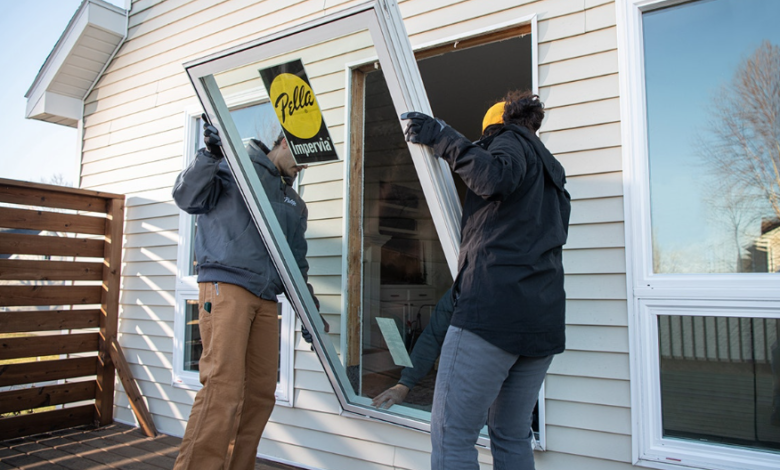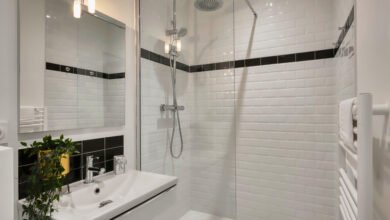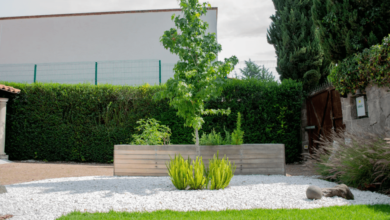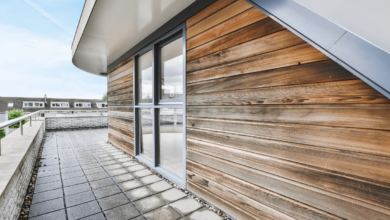Top Materials To Consider When Replacing Your Windows

When it’s time to replace your windows, one of the most important decisions you’ll face is choosing the right frame material. The material you choose has an impact on your windows longevity, energy efficiency, maintenance requirements, and total cost, in addition to their appearance. For homeowners seeking long-lasting durability and energy efficiency, exploring window replacement Edmonton options can ensure both performance and style are perfectly matched to local needs. With a variety of options available, each offering distinct advantages, understanding your choices is essential for making the best investment for your home.
Below is a breakdown of the top window frame materials to consider when planning a replacement project, along with their features, benefits, and ideal applications.
1. Vinyl: Low Maintenance, High Efficiency
With good reason, vinyl is one of the most widely used window materials nowadays. Made from PVC (polyvinyl chloride), vinyl windows are durable, energy-efficient, and budget-friendly. They offer excellent insulation and typically include multi-chambered frames that help reduce heat transfer.
Advantages:
- Requires minimal upkeep—no painting, staining, or sealing.
- Resistant to moisture, fading, and corrosion.
- Often available in a variety of colors and finishes.
- Offers strong thermal performance at an affordable cost.
Best For: Homeowners seeking a cost-effective, low-maintenance option with good insulation properties.
2. Wood: Classic Style With Natural Warmth
Wood has long been a favored material for its timeless beauty and rich appearance. It works exceptionally well in traditional or heritage-style homes and can be easily painted or stained to match interior décor. Even though wood needs more upkeep than other materials, many homeowners think the visual appeal justifies the work.
Advantages:
- Provides excellent insulation when properly maintained.
- It can be altered with a variety of colors and stains.
- Adds natural charm and elegance to interior spaces.
Best For: Those who prioritize visual warmth and are willing to maintain it with regular care.
3. Aluminum: Sleek And Strong
Aluminum windows are known for their strength and slim profiles, making them ideal for modern designs that feature large panes of glass. Although not as insulating as vinyl or wood, advances in thermal break technology have significantly improved their energy performance.
Advantages:
- Extremely durable and lightweight.
- Narrow frames allow for more glass and better views.
- Resistant to rust and weather-related wear.
Best For: Contemporary and commercial-style homes where durability and clean lines are key.
See also: Southeast Asia Off Grid Home Solar System Trends: Building Solar Homestays
4. Fiberglass: Durable And Energy-Efficient
Fiberglass windows are growing in popularity thanks to their strength, resistance to warping, and excellent thermal insulation. They are often more expensive than vinyl but offer greater longevity and require very little maintenance.
Advantages:
- Resists expansion and contraction in changing temperatures.
- It can be painted for a customized look.
- Mimics the look of wood without the maintenance.
- Excellent resistance to moisture, rot, and pests.
Best For: Homeowners looking for long-lasting, high-performance windows with minimal upkeep.
5. Composite: Best Of Both Worlds
Composite windows are made of a variety of materials, typically wood fibers and thermoplastics, which combine the beauty of wood with the durability of synthetic materials. This hybrid solution is a solid choice for those who want a premium look without the maintenance burden.
Advantages:
- Strong, stable, and energy-efficient.
- Offers the visual appeal of wood with enhanced durability.
- Resistant to decay, fading, and extreme weather.
Best For: Those who want a balance of style, strength, and energy savings.
Additional Considerations
When choosing a window material, it’s also important to consider your climate, home style, and personal priorities. For example, homes in humid or coastal regions may benefit more from fiberglass or vinyl, while those in cooler climates may opt for the insulation benefits of wood or composite.
Cost will also play a role. While vinyl tends to be the most budget-friendly, materials like fiberglass and composite come at a premium but offer longer-term value.
Final Thoughts
The material you choose for your window replacement project plays a critical role in the comfort, efficiency, and appearance of your home. Every option has advantages, and the best one for you will rely on your personal objectives, preferred style, and financial constraints. With thoughtful selection and professional installation, new windows can provide decades of beauty, performance, and peace of mind.





